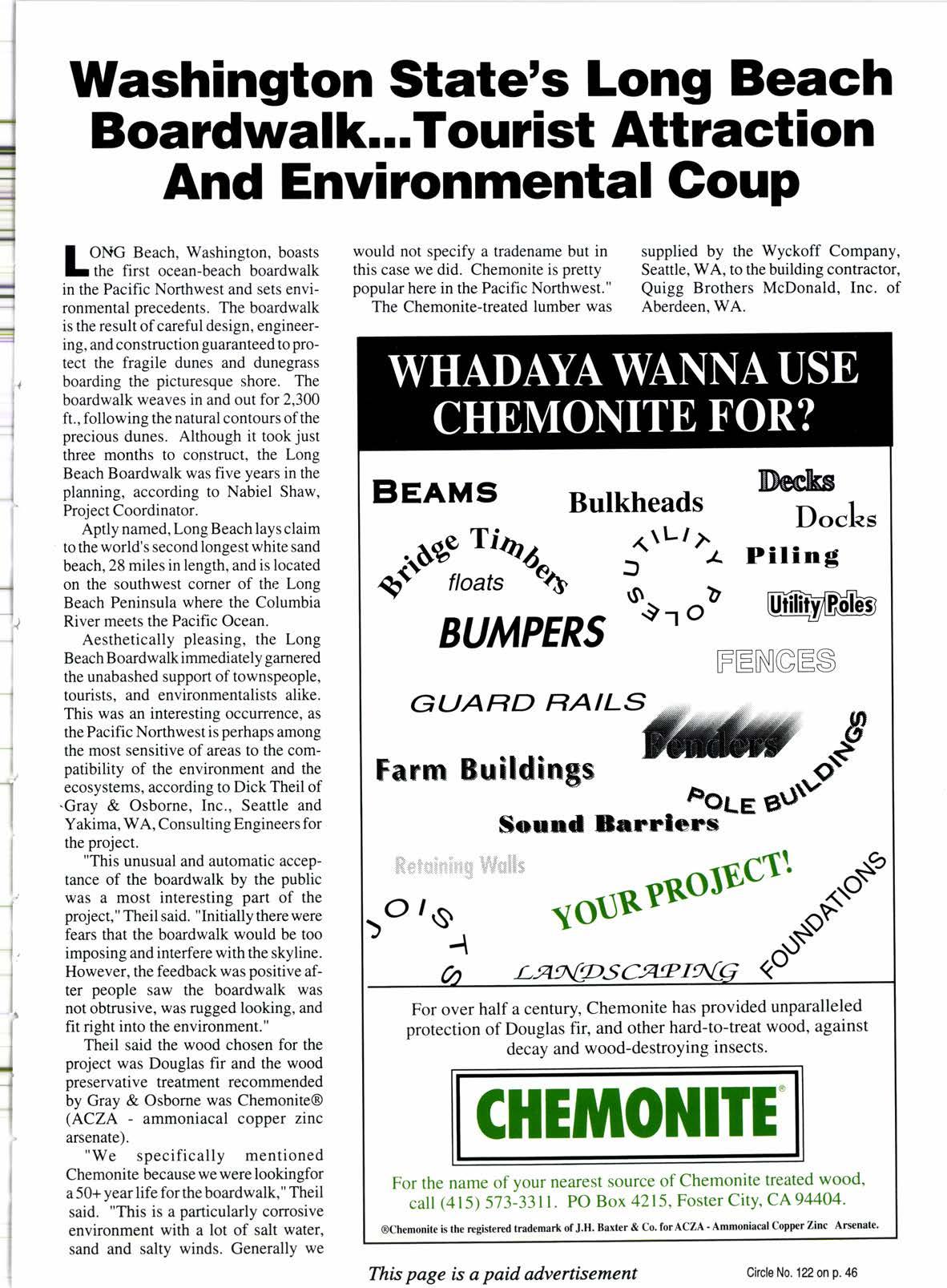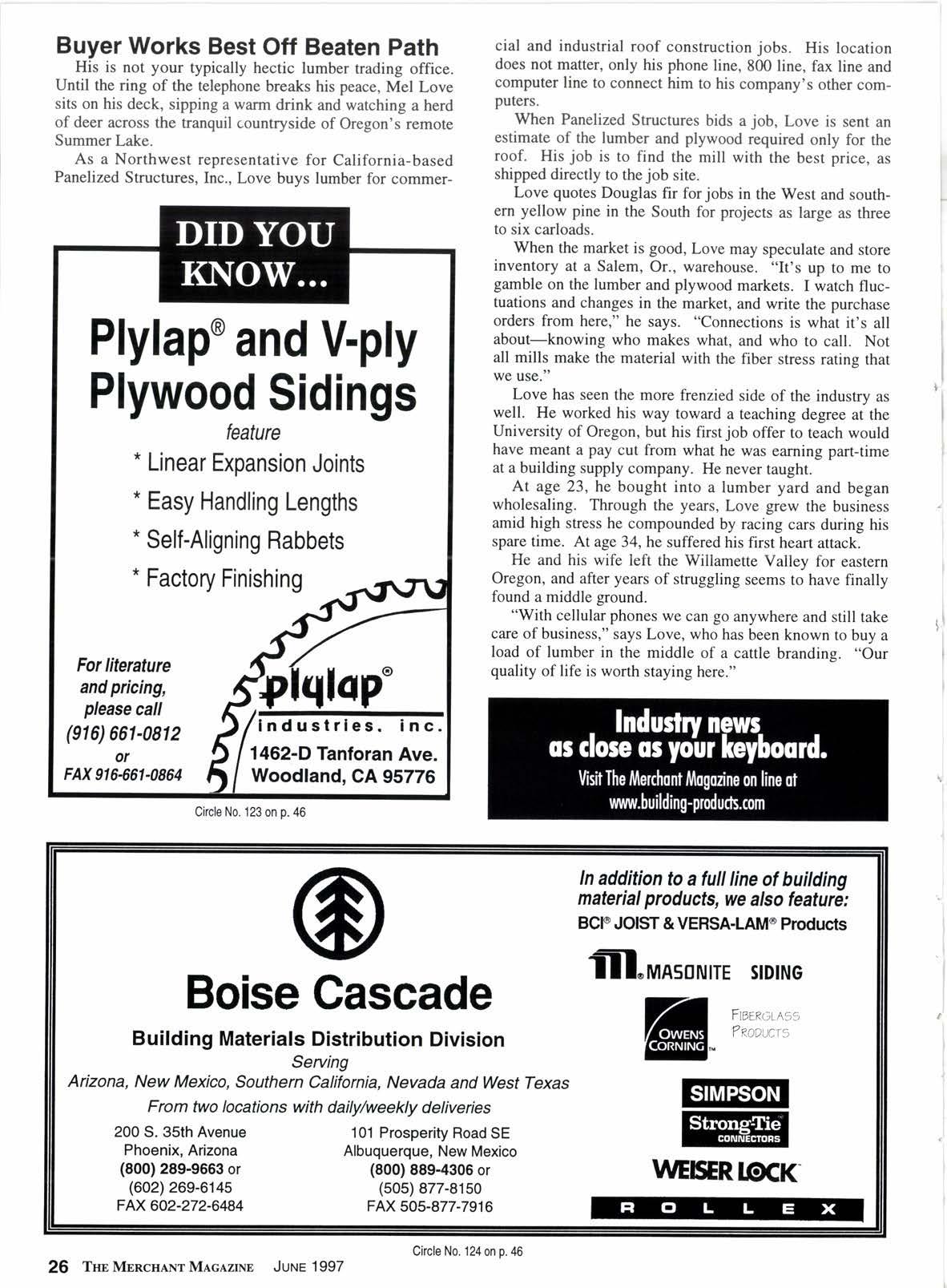
3 minute read
Washington State's Long Beach Boardwal k...Tourist Attraction And Environmental Goup
I OIrIG Beach, Washington, boasts b the first ocean-beach boardwalk in the Pacific Northwest and sets environmental precedents. The boardwalk is the result ofcareful design, engineering, and construction guaranteed toprotect the fragile dunes and dunegrass boarding the picturesque shore. The boardwalk weaves in and out for 2,300 ft., following the natural contours of the precious dunes. Although it took just three months to construct, the Long Beach Boardwalk was five years in the planning, according to Nabiel Shaw, Project Coordinator.
Aptly named, LongBeach laysclaim to the world's second longest white sand beach, 28 miles in length, and is located on the southwest corner of the Long Beach Peninsula where the Columbia River meets the Pacific Ocean.
Aesthetically pleasing, the Long Beach Boardwalk immediately gamered the unabashed support of townspeople, tourists, and environmentalists alike. This was an interesting occurrence, as the Pacific Northwest is perhaps among the most sensitive of areas to the compatibility of the environment and the ecosystems, according to Dick Theil of .Gray & Osborne, Inc., Seattle and Yakima, WA, Consulting Engineers for the project.
"This unusual and automatic acceptance of the boardwalk by the public was a most interesting part of the project," Theil said. "Initially there were fears that the boardwalk would be too imposing and interfere with the skyline. However, the feedback was positive after people saw the boardwalk was not obtrusive, was rugged looking, and fit right into the environment."
Theil said the wood chosen for the project was Douglas fir and the wood preservative treatment recommended by Gray & Osbome was Chemonite@ (ACZA - ammoniacal copper zinc anenate).
"We specifically mentioned Chemonite because we were lookingfor a 50+ year life for the boardwalk," Theil said. "This is a particularly corrosive environment with a lot of salt water, sand and saltv winds. Generallv we would not specify a tradename but in this case we did. Chemonite is pretty popular here in the Pacific Northwest."
The Chemonite-treated lumber was supplied by the Wyckoff Company, Seattle, WA, to the building contractor, Quigg Brothers McDonald, Inc. of Aberdeen, WA.
For over half a century, Chemonite has provided unparalleled protection of Douglas fir, and other hard-to-treat wood, against decay and wood-destroying insects.
Buyer Works Best Off Beaten Path
His is not your typically hectic lumber trading office. Until the ring of the telephone breaks his peace, Mel Love sits on his deck, sipping a warm drink and watching a herd of deer across the tranquil countryside of Oregon's remote Summer Lake.
As a Northwest representative for California-based Panelized Structures, Inc., Love buys lumber for commer- cial and industrial roof construction jobs. His location does not matter, only his phone line, 800 line, fax line and computer line to connect him to his company's other computers.
When Panelized Structures bids a job, Love is sent an estimate of the lumber and plywood required only for the roof. His job is to find the mill with the best price, as shipped directly to thejob site.
Love quotes Douglas fir for jobs in the West and southern yellow pine in the South for projects as large as three to six carloads.

When the market is good, Love may speculate and store inventory at a Salem, Or., warehouse. "It's up to me to gamble on the lumber and plywood markets. I watch fluctuations and changes in the market, and write the purchase orders from here," he says. "Connections is what it's all about-knowing who makes what, and who to call. Not all mills make the material with the fiber stress rating that we use."
Love has seen the more frenzied side of the industry as well. He worked his way toward a teaching degree at the University of Oregon, but his first job offer to teach would have meant a pay cut from what he was earning part-time at a building supply company. He never taught.
At age 23, he bought into a lumber yard and began wholesaling. Through the years, Love grew the business amid high stress he compounded by racing cars during his spare time. At age 34, he suffered his first heart attack.
He and his wife left the Willamette Valley for eastern Oregon, and after years of struggling seems to have finally found a middle ground.
"With cellular phones we can go anywhere and still take care of business," says Love, who has been known to buy a load of lumber in the middle of a cattle brandins. "Our quality of life is worth staying here."

